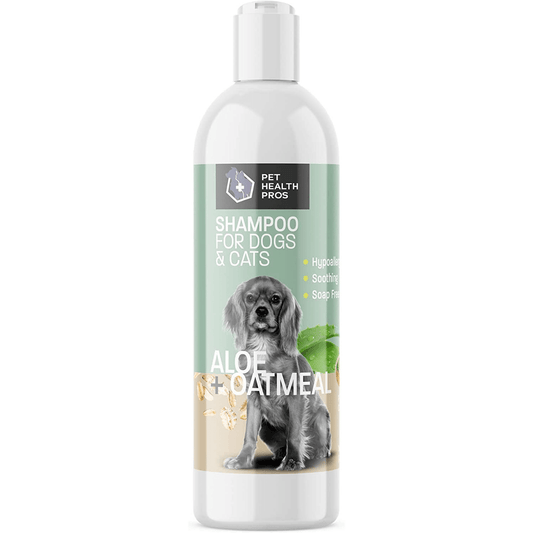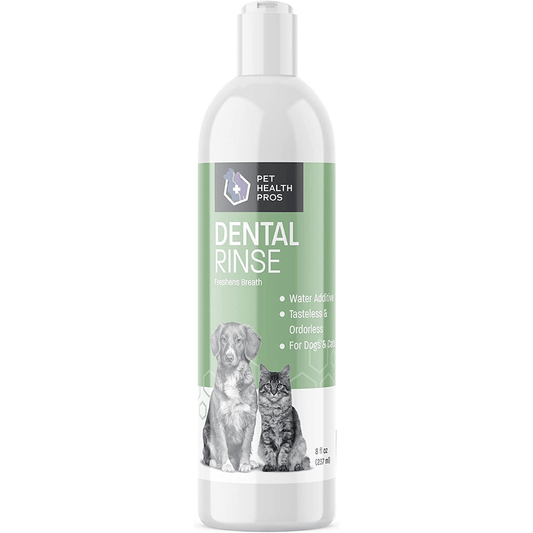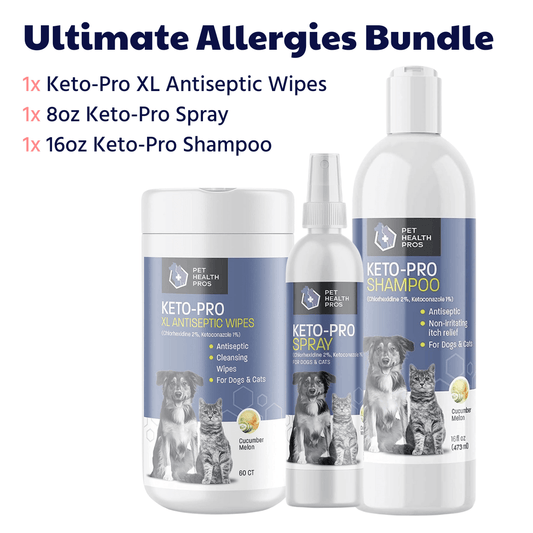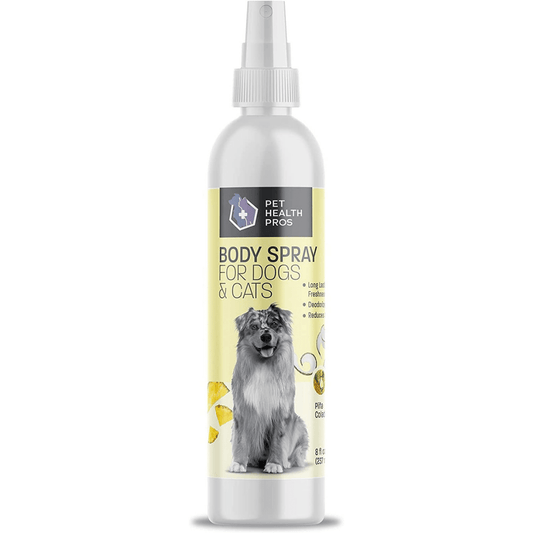Expressing your dog's anal glands at home can be a necessary and beneficial task for maintaining your pet's health and comfort. Understanding the anatomy of your dog's anal glands, having the right tools and supplies, following a step-by-step guide, and recognizing signs of anal gland issues are essential for a safe and effective process. By learning these key aspects, you can confidently care for your furry friend's anal gland health at home.
Key Takeaways
- Understanding the anatomy and function of your dog's anal glands is crucial for safe expression.
- Having the right tools, choosing appropriate supplies, and following safety precautions are key for a successful procedure.
- Properly preparing your dog, performing the expression technique gently, and providing post-expression care are important steps to follow.
- Recognizing behavioral and physical signs of anal gland issues helps in early detection and timely veterinary intervention.
- Regularly expressing your dog's anal glands at home can prevent discomfort and potential health problems.
Understanding the Anatomy of Your Dog's Anal Glands
Locating the Anal Glands
The anal glands, or anal sacs, are two small glands located on either side of your dog's anus, typically at the four o'clock and eight o'clock positions. Understanding their exact location is crucial for safely expressing them at home. These glands produce a smelly secretion that serves as a scent marker for your dog.
To locate the anal glands, you will need to gently lift your dog's tail and feel for two small, grape-sized lumps on either side of the anus. It's important to approach this process calmly to keep your dog relaxed. If you're unsure about identifying the glands, consult a veterinarian or a professional groomer for guidance.
Remember, while expressing your dog's anal glands can be done at home, it should only be attempted if you are confident in your ability to do so without causing discomfort or harm to your pet.
Function of Anal Glands
The anal glands, or anal sacs, play a crucial role in canine communication. They are located on either side of a dog's anus and secrete a unique-smelling fluid that is used for marking territory and identifying one another. This scent-marking is vital for social interaction among dogs.
When a dog defecates, the pressure causes the glands to express naturally, coating the feces with the scent. However, if the glands do not empty properly, it can lead to discomfort and health issues. It's important for dog owners to recognize the signs of anal gland problems and know how to safely express them if needed.
Regular maintenance of your dog's anal glands can prevent discomfort and potential infections, ensuring your pet remains happy and healthy.
Common Issues with Anal Glands
The anal glands of dogs are essential for marking territory and communication through scent. However, these glands can sometimes encounter problems, leading to discomfort and health issues for your pet. Impaction is one of the most common issues, where the glands become clogged and cannot express naturally. Infections can also occur, potentially leading to abscesses that are painful and may require surgical intervention.
Inflammation of the anal glands is another issue that can cause your dog distress. This can lead to your dog scooting on the ground, licking the area excessively, or showing signs of pain during defecation. It's crucial to recognize these symptoms early to prevent progression to more severe conditions.
Regular monitoring and proper diet can help maintain anal gland health and prevent common issues. If you notice any changes in your dog's behavior or symptoms related to the anal glands, consult with a veterinarian for appropriate treatment options.
Here is a list of common anal gland issues and their potential treatments:
- Impaction: Manual expression or surgery
- Infection: Antibiotics or surgery
- Inflammation: Dietary changes, medication, or surgery
- Abscesses: Surgical drainage and antibiotics
Tools and Supplies Needed for Expressing Anal Glands
Essential Tools for the Procedure
To safely express your dog's anal glands at home, you will need a few essential tools. Gloves are a must to maintain hygiene and protect your hands during the procedure. You'll also require absorbent paper towels or wipes to clean up any expressed fluid. A lubricant, such as petroleum jelly, is necessary to ease the expression process and minimize discomfort for your dog.
- Gloves (disposable, latex or nitrile)
- Absorbent paper towels or wipes
- Lubricant (petroleum jelly or a similar product)
Ensure that all tools are within reach before starting the procedure to avoid any unnecessary interruptions.
Remember, while these tools are essential, the most important aspect is your technique and handling of the dog to prevent any injury or discomfort. If you're unsure about the process, consult a veterinarian or a professional groomer for guidance.
Choosing the Right Supplies
When selecting supplies for expressing your dog's anal glands, it's crucial to choose items that are safe and effective. Pet Health Pros offers a range of supplies that are crafted in collaboration with veterinarians, ensuring that you're using products designed for the task. The company's commitment to quality and expertise-driven formulations means you can trust the supplies you use on your pet.
Gloves are essential to maintain hygiene and protect your hands during the procedure. Opt for non-powdered, latex-free gloves if your dog or you have allergies. Soft, absorbent paper towels or cloths will be needed to clean up after the expression. It's also advisable to have a mild, pet-safe disinfectant on hand to clean the area around the glands post-expression.
Remember, the right supplies not only make the process easier but also ensure the comfort and safety of your dog.
Here is a list of recommended supplies:
- Non-powdered, latex-free gloves
- Absorbent paper towels or cloths
- Mild, pet-safe disinfectant
- Warm water and a soft washcloth (for cleaning)
Ensure that all supplies are within reach before starting the procedure to maintain a calm and controlled environment.
Safety Precautions to Consider
When expressing your dog's anal glands at home, safety should be your top priority. Always wear gloves to protect yourself from potential infection and to maintain hygiene. Ensure that you are in a well-lit area so you can clearly see what you are doing. It's crucial to be gentle during the process to avoid causing discomfort or injury to your dog.
Before you begin, familiarize yourself with a guide on administering first aid to dogs. This knowledge can be invaluable in case of an accidental injury. Remember to stay calm, assess any injuries, stop bleeding, clean wounds, and seek veterinary help for serious conditions.
Be mindful of your dog's behavior throughout the procedure. If your dog shows signs of severe discomfort or aggression, it's best to stop and consult a professional.
Lastly, having the right supplies on hand is essential. Top pet health products, crafted with care and expertise, can make the process smoother and safer for both you and your pet.
Step-by-Step Guide to Safely Expressing Your Dog's Anal Glands
Preparing Your Dog for the Procedure
Before expressing your dog's anal glands, it's crucial to ensure that both you and your pet are prepared for the procedure. Start by creating a calm environment; this may include a quiet room free from distractions. Next, gather all necessary supplies, which should include gloves, paper towels, and a lubricant such as the ones provided by Pet Health Pros, known for their superior, affordable pet health supplies.
Ensure your dog is comfortable and willing to stay still for a few minutes. If your dog is anxious or squirmy, consider having a second person assist by gently holding the dog. Here's a simple checklist to help you prepare:
- Gloves
- Paper Towels
- Lubricant (preferably from a trusted brand like Pet Health Pros)
- A second person (if needed)
Remember, patience and gentleness are key. Rushing the process or being too forceful can cause discomfort or even injury to your dog.
Once everything is in place, you're ready to proceed with the expression technique. Make sure to follow each step carefully to avoid any complications and to ensure a safe and successful procedure.
Performing the Expression Technique
Expressing your dog's anal glands requires precision and gentleness to ensure the procedure is comfortable and safe for your pet. Learn the proper technique before attempting the procedure, as incorrect expression can lead to discomfort, infection, or even gland damage. Here's a step-by-step guide:
- Position your dog in a comfortable stance, either standing or lying on its side.
- Lift the tail gently to expose the anal area.
- Locate the anal glands, which are situated at the four and eight o'clock positions around the anus.
- Using a gloved hand, apply gentle pressure to the gland, squeezing upwards and inwards.
- Wipe away any expressed material with a clean cloth or paper towel.
Note: If you encounter resistance or your dog shows signs of pain, stop immediately and consult a veterinarian. It's crucial not to force the glands as this can cause injury.
After the expression, monitor your dog for any signs of discomfort or unusual behavior. A successful expression should relieve any built-up pressure and help your dog feel more comfortable. Remember, regular maintenance can prevent many common issues associated with anal glands.
Post-Expression Care Tips
After expressing your dog's anal glands, it's crucial to monitor your pet for any signs of discomfort or irritation. Ensure the anal area is clean and free from any residual fluids to prevent infection. A gentle wipe with a warm, damp cloth can help soothe the area.
Incorporating fiber-rich foods into your dog's diet can help maintain regular bowel movements, which naturally assist in expressing the anal glands. Consider adding a spoonful of canned pumpkin or switching to a higher-fiber dog food as recommended by your veterinarian.
Probiotics can also support your dog's digestive health and may aid in the natural expression of the anal glands. Supplements like those suggested by Dogster, such as canine-formulated probiotics, can boost beneficial bacteria and promote a healthy gut.
It's important to observe your dog's behavior post-expression. If you notice any persistent scooting, licking, or signs of pain, consult your veterinarian promptly.
Remember, regular check-ups with a professional groomer or veterinarian can help prevent anal gland issues from becoming a recurring problem.
Recognizing Signs of Anal Gland Issues in Your Dog
Behavioral Indicators to Watch For
Dogs may not be able to communicate discomfort verbally, but their behavior can signal when something is amiss with their anal glands. Scooting is a classic sign; dogs will drag their rear on the ground in an attempt to relieve pressure or irritation. Excessive licking or biting at the tail or rear area is another red flag. If your dog is displaying these behaviors, it's important to pay attention as they may indicate the need for anal gland expression.
Restlessness or changes in sitting posture can also suggest discomfort in the anal gland area. Dogs might sit down abruptly or shift their weight often while trying to find a comfortable position.
It's crucial to monitor your dog's behavior regularly for these signs, as early detection can prevent more serious complications.
If you observe any of the following behaviors, consider them as potential indicators of anal gland issues:
- Scooting or dragging the rear along the ground
- Excessive licking or biting at the rear
- Sudden changes in sitting or lying posture
- Visible discomfort or restlessness
Remember, while these behaviors can suggest anal gland problems, they are not definitive diagnoses. Always consult with a veterinarian if you suspect your dog is experiencing anal gland issues.
Physical Symptoms of Anal Gland Problems
Physical symptoms are often the most noticeable indicators of anal gland issues in dogs. Scooting or dragging their rear on the ground is a common sign that a dog may be experiencing discomfort. Additionally, a dog might frequently lick or bite at the anal area, or you may notice a foul odor emanating from their rear.
Other symptoms include swelling or redness near the anus, difficulty defecating, or a visible discharge. If you observe any of these signs, it's crucial to address the problem promptly to avoid further complications.
It's essential to be vigilant and responsive to these symptoms, as they can escalate quickly from discomfort to more severe conditions such as impaction, infection, or even tumors.
Remember, while some symptoms may be managed at home, others require immediate veterinary attention. Always consult with a professional if you are uncertain about the severity of your dog's condition.
When to Seek Veterinary Assistance
It's crucial to recognize when home care is insufficient and veterinary assistance is necessary for your dog's anal gland issues. Persistent problems, despite regular expressions, or signs of infection such as swelling, redness, or discharge, warrant professional evaluation. If your dog exhibits severe discomfort, lethargy, or changes in appetite, these could be indicators of a more serious condition.
Behavioral changes in your dog, such as excessive licking or scooting, should not be ignored. These behaviors often signal discomfort and may require a veterinarian's intervention to prevent complications.
Timely veterinary care can prevent anal gland issues from escalating and ensure your dog's health and comfort.
Here are some signs that it's time to consult a veterinarian:
- Persistent foul odor even after expressing the glands
- Difficulty defecating or bloody stools
- Visible swelling or abscesses near the anal area
- Your dog is in obvious pain or distress
Remember, while expressing your dog's anal glands at home can be part of routine grooming, it's important to defer to professionals when complications arise.
If your furry friend is showing signs of discomfort or unusual behavior, it might be time to check for anal gland issues. Early detection and proper care are crucial for your dog's health. Visit our website to explore a wide range of pet health supplies, including products specifically designed to support anal gland health. Don't wait until it's too late—ensure your pet's well-being today!
Conclusion
In conclusion, safely expressing your dog's anal glands at home is an important aspect of maintaining your pet's health and well-being. By following the proper techniques and guidelines outlined in this article, you can help prevent discomfort and potential health issues for your furry companion. Remember to always consult with your veterinarian if you have any concerns or if you are unsure about performing this procedure. Your dedication to your pet's care and health is key to ensuring a happy and thriving relationship with your beloved dog.
Frequently Asked Questions
What are anal glands in dogs and why do they need to be expressed?
Anal glands are small glands located near a dog's anus that secrete a smelly substance. They need to be expressed to prevent discomfort, infection, or impaction.
Can I express my dog's anal glands at home?
Yes, you can express your dog's anal glands at home, but it is important to learn the proper technique and consult with a veterinarian if you are unsure.
How often should I express my dog's anal glands?
The frequency of expressing your dog's anal glands depends on your dog's individual needs and any existing anal gland issues. It is best to consult with a veterinarian for guidance.
What tools do I need to safely express my dog's anal glands at home?
You will need gloves, lubricant, gauze or wipes, and a firm grip to safely and effectively express your dog's anal glands.
What are the signs that my dog may have anal gland issues?
Signs of anal gland issues in dogs include scooting, licking or biting at the rear end, foul odor, and swelling or redness around the anus.
Is it normal for my dog to have anal gland issues?
While anal gland issues are not uncommon in dogs, they can be prevented or managed with regular expression and proper care. Consulting with a veterinarian is recommended for persistent issues.









